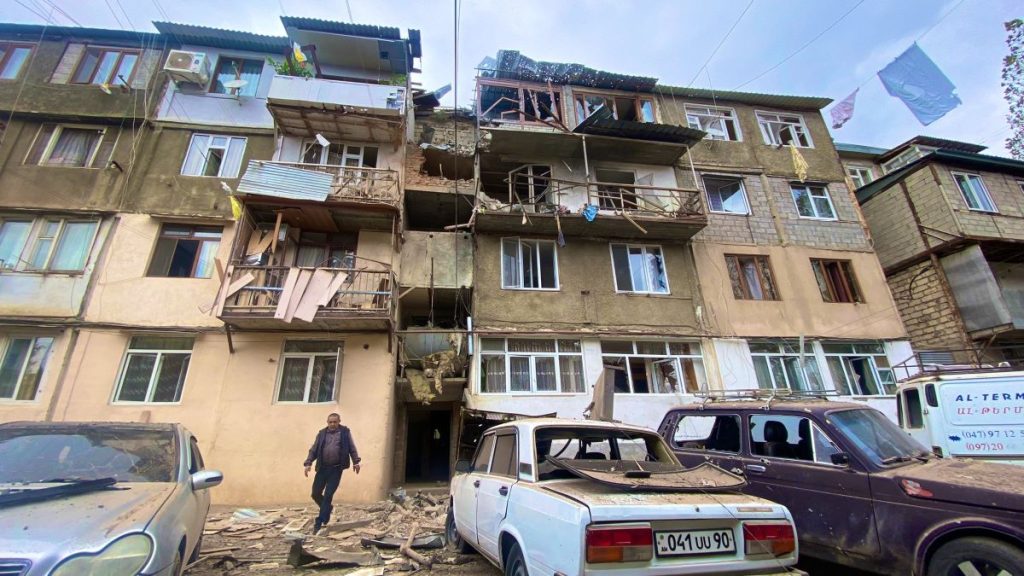The Kremlin's method of covering events in NK and Armenia: "The West is to blame, Russia saves"
Kremlin method of covering events in NK
The “Meduza” publication has in its possession a document sent from the presidential administration to Russian media outlets on the evening of September 19, at the height of the hostilities in Karabakh. The document gave clear instructions on how exactly Kremlin-loyal publications should cover the situation i the unrecognized republic.
All details according to the material by “Meduza”.
- “Neutrality of mediators encourages the party that uses force” – Pashinyan
- 1000 packages for 120 thousand people in blockade: Russia’s aid to unrecognized NK
- Armenian-American military exercises: Russia’s reaction and response from Armenia
“Meduza” found out how the Kremlin recommends state media to cover the events in Nagorno-Karabakh – Armenia and its Western “partners” are to blame for everything. And Russian peacekeepers are heroically saving civilians from shelling.

Meduza has obtained a methodology that the presidential administration sent to employees of state-owned and Kremlin-loyal media outlets on the evening of September 19. In it, the Kremlin recommends blaming Armenia and Western countries for the escalation of the conflict in Nagorno-Karabakh. The emphasis should be placed on the fact that “the Armenian leadership has recognized Azerbaijan’s sovereignty over Karabakh”, and to confirm this thesis the presidential administration advises quoting statements by Armenian Prime Minister Nikol Pashinyan made in October 2022. However, at that time Pashinyan and Azerbaijani President Ilham Aliyev explicitly talked only about respect for the territorial integrity and sovereignty of their countries.
The textbook says:
“Most likely, this statement of the Armenian Prime Minister was pushed by his Western “partners”, who should fully share with him the responsibility for the consequences. The decision of the Armenian leadership, which itself radically changed the status of Karabakh, became a signal for Azerbaijan to take action; now Baku perceives the conflict in Nagorno-Karabakh as its own internal one.”
The Kremlin recommends describing the status of the Russian peacekeepers as “observational,” while the pro-government media should talk about the peacekeepers’ assistance in “evacuating civilians”. Separately, the authors of the manual recommend mentioning that people find “refuge” in an Orthodox church located on the base of the Russian peacekeeping contingent.
Directions already being carried out
These theses have already appeared in the material of “Komsomolskaya Pravda”. The publication writes that “Armenian Prime Minister Nikol Pashinyan agrees that Karabakh is Azerbaijan”. “The Armenian people would like peace in Karabakh and prosperity in Armenia. The government in Yerevan, judging by its political moves, dreams of getting rid of Karabakh as an unnecessary burden and setting sail for the West,” KP specifies. A Lenta.ru article points out that “the Karabakh issue is essentially becoming an internal affair of Azerbaijan”.
And it is also desirable to talk about success in Ukraine
At the same time, employees of the pro-government media are advised to talk about successes that Russian troops are allegedly achieving in Ukraine. The authors of the manual formulate the “task” of the Russian army as follows: “knocking out equipment and personnel of the Ukrainian armed forces”.
At the same time, Ukraine and Western experts describe the strategy of the Ukrainian army in exactly the same way. According to Meduza’s calculations, since the beginning of the Ukrainian counteroffensive on June 4, both sides have lost almost equal amounts of equipment (with the AFU knocking out significantly more Russian tanks than the RF Armed Forces knocked out Ukrainian tanks).
“All attacking actions of Ukrainian formations are effectively stopped by massive artillery fire and front-line aviation strikes. Claiming an advance of a couple of hundred meters, AFU units are thrown back to their original positions as a result of counterattacks” – this is what the Kremlin is advised to say about the situation on the front.
However, this is not true. In July, the Russian Armed Forces did push back the AFU from Berkhovka and Yagodnoye in the Donetsk region, but since then the Russian army has not been able to occupy any territories. Ukrainian forces, in turn, liberated Kleshcheyevka and Andreevka in Donbass, advanced about three kilometers deep on an eight-kilometer-wide front since August, and repelled counterattacks by the Russian Armed Forces (after which the Russian forces withdrew to the next defense line).
On September 20, Azerbaijan and the authorities of the unrecognized Nagorno-Karabakh Republic declared a ceasefire; 32 people were killed and more than 200 injured during Azerbaijan’s “anti-terrorist measures” in Nagorno-Karabakh. Armed formations on NKR territory will be disbanded and disarmed, and a meeting on “reintegration, ensuring the rights and security of Nagorno-Karabakh Armenians” will be held in the Azerbaijani town of Yevlakh on September 21.
Follow us – Twitter | Facebook | Instagram
Kremlin method of covering events in NK


















